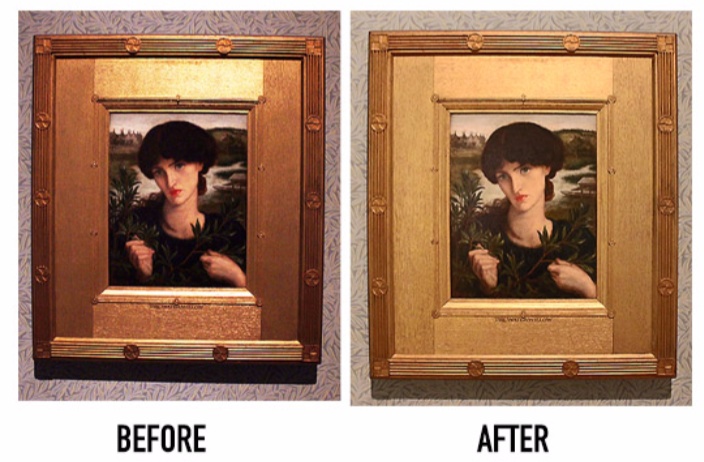If you think you’ve seen all there is to see at the Delaware Art Museum (which is never really true, anyway), think again. Those Pyles and Rossettis look better, brighter and even more detailed than before — all thanks to the environmentally friendly LED.
“It was like night and day,” said Jonathan Schoff, the museum’s Chief Preparator. “We were noticing details we’d never noticed before.”
The switch to LED is part of Delaware Art Museum’s ongoing commitment to going green, which includes upgrades to the heating and cooling system, a recycling program and automated water fountains. (Like we’ve said, energy management is a hot field right now.)
But it’s the new lighting that’s most noticeable to regular visitors and staff.
A $13,000 grant from Crystal Trust in 2015 was originally meant to replace only some of the galleries’ halogen lights — the goal was to have all of the galleries updated in 2018, with the Pre-Raphaelites going LED last as part of a planned gallery overhaul.

By the spring of this year, about a year before the goal, every gallery’s lighting was upgraded using the one grant.
“When we first started looking at LED, one bulb was $80,” says Schoff. “Then it went down to $50 the next year, and $20 the next.”
Today, he says, some of the smallere LEDs are about as inexpensive as halogens. And the difference they make is huge, even beyond the improved viewing and significant energy savings.
“We used to have to change bulbs every day somewhere in the museum,” Schoff says. “It would take about an hour a day just to change bulbs — that’s a lot of work. So just in time alone, there’s a big difference.”
And, with this generation of LEDs lasting about five years, there isn’t the constant need to budget for new bulbs.
Another difference: LEDs, unlike halogens, don’t give off heat. Regulating temperature (and humidity) is especially important in art galleries, which serve as archival spaces as well as viewing spaces. Without the heat from the lights, cooling costs go down.
Not to mention, it takes 20 percent fewer LEDs to properly light a gallery compared to halogen. Those extra fixtures can be used for guest exhibitions.

Still, it wasn’t all as simple as replacing the bulbs. They had to find the right balance between warm and “daylight,” and too-bright LEDs can wash out artwork and make it look worse.
“It was a challenge at first,” admitted Schaff. But in the end, between the energy reduction, less labor and artwork that looks better than ever, finding the right LEDs paid off.
If you want to get a good look at the “new and improved” artwork in the Museum’s permanent collection, you’ve got to do it in person. Admission is free on Sundays (10 a.m. to 4 p.m.) and Thursday evenings (4 to 8 p.m.). The museum is closed on Mondays and Tuesdays.








